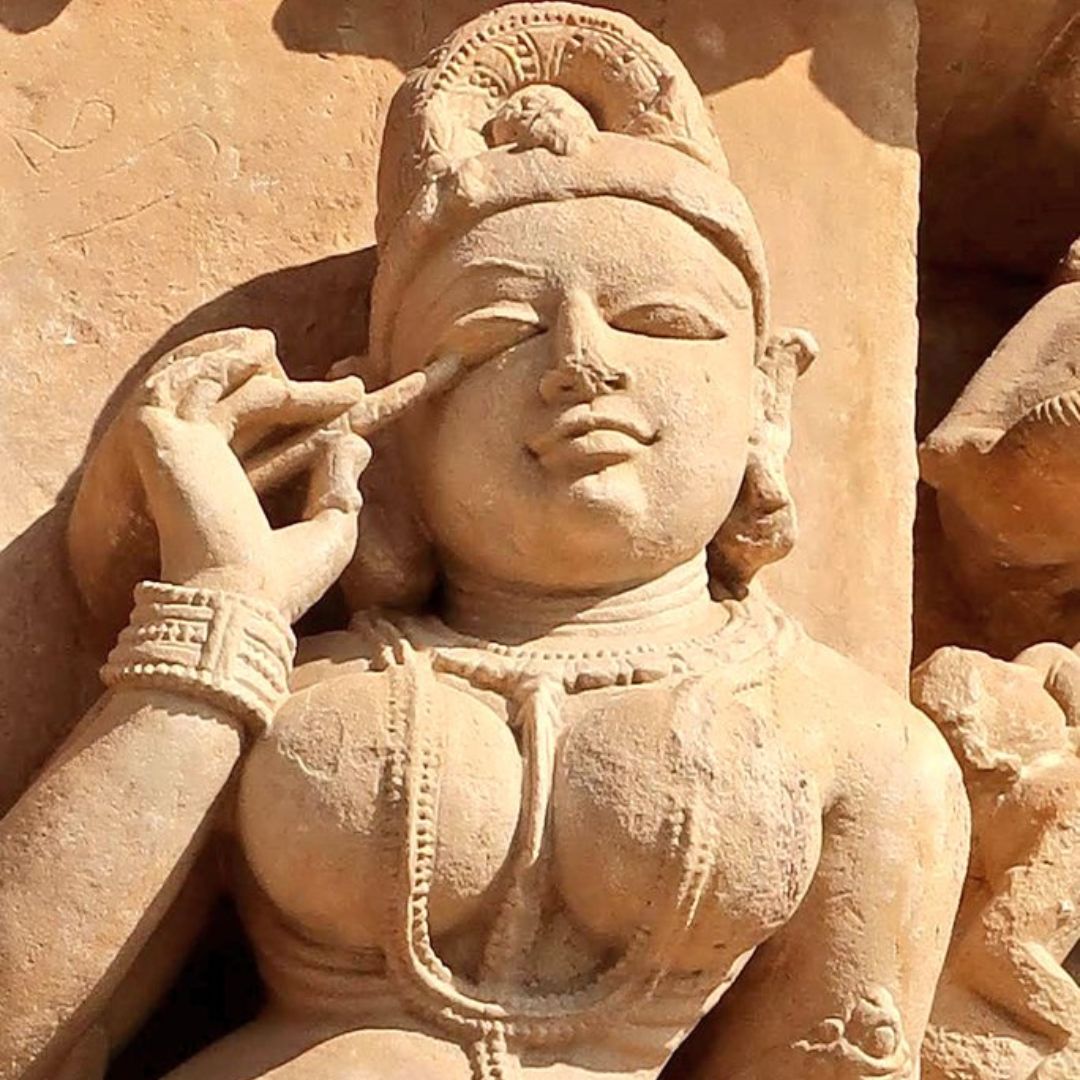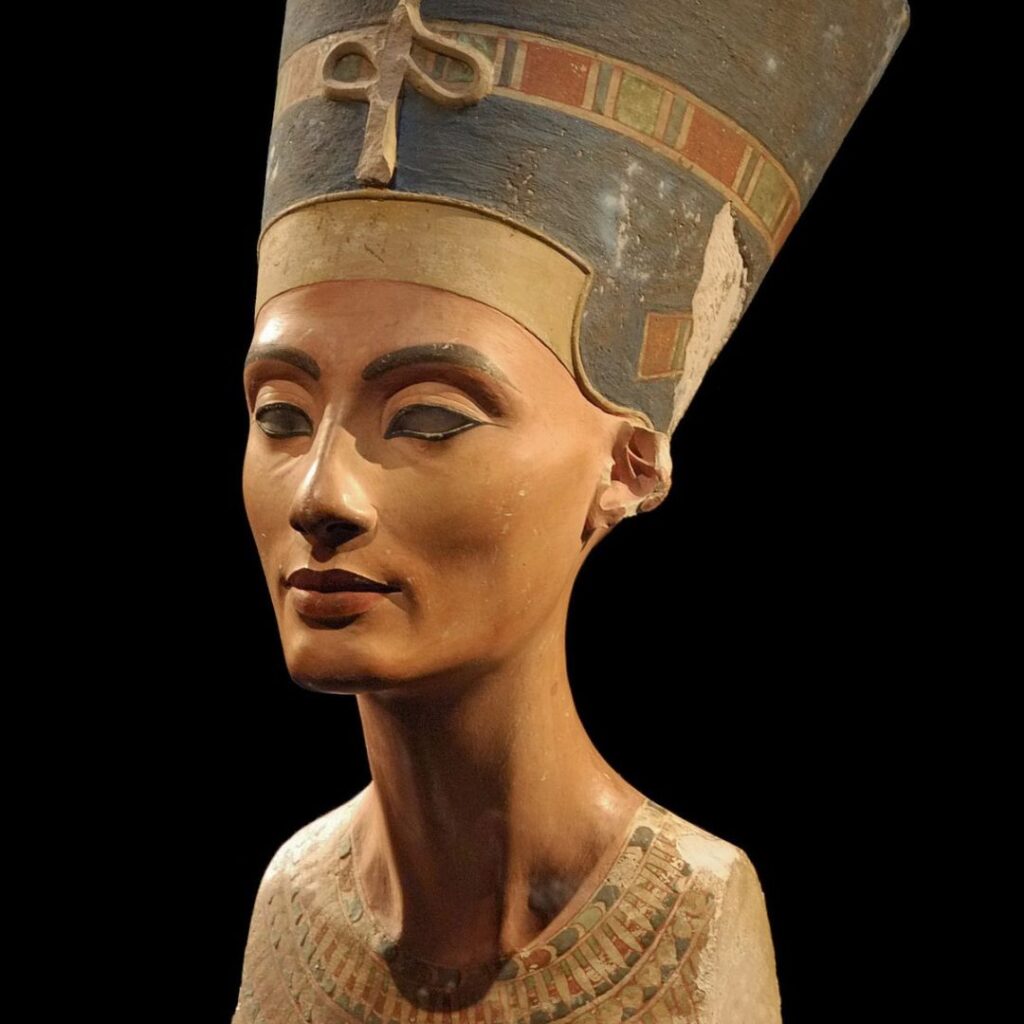Kohl-rimmed eyes have long ruled the beauty world, and The Word. delves into how the famed Indian kajal came into being.
- Beauty
Did You Know That Kajal Did Not Originate In India?
- ByTeam The Word.

An ancient sculpture in Khajuraho depicting a woman applying kajal
If you have Indian roots, no matter which part of the world you were born in—or grew up in—chances are your first tryst with beauty was a tiny dot of kajal…that too when you were probably just an infant. It’s one of those rituals Indian mothers and grandmothers have held sacred for hundreds of years to ward off evil—or nazar. But kajal does more than just ward off evil. It has been a staple in Indian women’s beauty arsenal for centuries.
However, it turns out that India is not its birthplace. We track down kajal’s origin and how it became such an intrinsic part of the Indian beauty routine.
So Where Does Kajal Come From?
The earliest evidence of kajal in historical records dates back to 3100-3500 BC in Egypt. During the Protodynastic Period, it was called Galena eye paint—a thick, black ointment made from ground lead sulfide and minerals mixed with water and oil—and was worn by both men and women. Ancient Egyptians used this paint to dress their peepers, make them appear bigger, and protect their eyes from the harsh rays of the sun and, of course, evil eye! Galena was later termed kohl, which comes from Arabic.

Apart from Egypt, kohl’s significance has been well-noted in many other regions like Africa, where various tribes used kohl to draw distinct lines and shapes around the eyes, nose, and forehead, among other body parts. History records reflect that Somali, Djiboutian, Ethiopian, and Eritrean women also applied kohl (or kuul) to cleanse their eyes, lengthen lashes, and protect the eyes from the sun’s rays. Kohl is also considered an essential part of the beauty routine in other Asian countries as well, like Afghanistan, Iran, and Pakistan, among others.
In India, we not only have our own version of kohl, but it is known by many names—like surma in Urdu and Punjabi, kaadige in Kannada, kaatuka in Telugu, kanmashi in Malayalam, and kan mai in Tamil.
The Indian Version of Kohl
Just like the name varies in different regions, how kajal was prepared also differed in different cultures. In ancient India, women prepared kajal by lighting a small piece of cotton dipped in ghee. The flame was covered with a metal tin, and the residual soot was then collected and mixed with camphor or sandalwood to finish the product. Women used their fingertips to line their waterline with this blend, which had a cooling effect owing to the ingredients. Kajal had a creamier consistency, which allowed women to create a smoked-out effect as opposed to the modern-day kohl, which is used to tight-line the eyes.
Similarly, to create surma, a thin muslin cloth is first dipped in sandalwood juice and then left to dry—this process is repeated several times during the day, after which a wick is made from the cloth. That wick is used to light a mud lamp filled with castor oil, and covered with a brass vessel. The lamp is left burning overnight, and the next day, you add a few drops of ghee to the soot and store it in a small box.
What Makes Kajal So Popular in India, and Around the World?
Apart from its cultural significance, kajal has a certain nostalgia factor, which makes it an important part of every woman’s beauty box. Decades ago, eye make-up for our grandmothers and mothers comprised just the humble kajal. It allowed them to line their lids or smoke it out to draw attention to their eyes.
The more we learn about ancient civilizations around the world, the more we realise that key beauty rituals have travelled far and wide and taken a new shape each time they converge with a new culture. And kajal boasts a similar story…which adds to its global appeal. Some of the biggest beauty brands around the world have created separate kohl categories as it amounts to a big piece of the revenue pie.
It is no wonder then that we have seen a surge in several easy-to-use products like kohl pencils, gel-kohl liners, etc to add drama to your lids.





